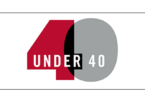Georgia Economic Outlook 2009
Summary Sheet
Tables and graphs available online:
Who, What and Where — About 1,000 Atlanta executives, government leaders and University of Georgia alumni are registered for the Georgia Economic Outlook luncheon in Atlanta. The Dec. 3rd program at the Georgia World Congress Center is the 26th annual economic forecast luncheon hosted by UGA’s Terry College of Business. Speakers include UGA President Michael Adams, Gov. Sonny Perdue, Forbes magazine publisher Steve Forbes and Terry College Dean Robert Sumichrast.
The Georgia and U.S. economic forecasts summarized here were prepared by the Terry College’s Selig Center for Economic Growth.
The Georgia Forecast
At a Glance – The Selig Center forecast offered a grim assessment of the Georgia economy, predicting a recession that will be “severe rather than mild and prolonged rather than short,” according to Dean Robert T. Sumichrast of UGA’s Terry College of Business. “I believe that the first and second quarters of 2009 will be dreadful. Just how dreadful depends on when, and to what degree, the credit markets thaw.” Noting that recessionary periods historically average about 10 months, Sumichrast said he anticipates this recession lasting 18 months. “It will be the longest downturn since the Great Depression.” But he stopped short of calling the current economic cycle a depression.
“That’s largely because the policy responses by the Federal Reserve, the Treasury Department and the FDIC have been massive, targeted and very timely,” Sumichrast said. “The Feds have pulled out all the stops to prevent a depression. We are about halfway through the really bad stuff. This is not the time to lose your nerve or to panic. The main takeaway from my remarks is that this is the time to plan and soon it will be time to act. You can take advantage of the economic recovery that is coming in 2009.”
Where’s the Bottom of the Trough? “Given what we know today, the most likely scenario is that the economy bottoms out in the third quarter of 2009,” Sumichrast said. “Until the upswing begins, we are going to see very sharp pullbacks in spending by consumers and businesses. The aftershocks of the financial panic will continue to be felt. People and companies have lost assets. Many are truly less well off. And the wealth that has been lost will not easily be rebuilt. So, even though the economy is likely to bottom out in two more quarters, it will be very slow to recover.”
By the Numbers – For the year, Georgia’s economy is expected to grow just 1.0 percent in 2008, after adjusting for inflation. And in 2009, the state’s gross domestic product is forecast to shrink 1.4 percent. Georgia’s economy will slowly begin to turn around in the third quarter and will accelerate to about 2.5 percent growth by mid-2010. “That’s on par with the average rate of economic growth in Georgia over the past 10 years,” Sumichrast said.
Unemployment Will Double – The period of declining employment in Georgia is forecast to last for 17 months – through July 2009. But when hiring resumes in the third quarter of 2009, job growth will be too anemic to keep pace with the growth of the labor force. Consequently, Georgia’s unemployment rate will keep rising throughout 2009. “It will peak at about 9 percent in early 2010,” Sumichrast said. “That will be the highest unemployment rate since the current data series began in 1976.” Georgia’s jobless rate was 4.4 percent in 2007, rising to 6.0 percent this year.
Contrasts with 2001 Recession – “Our last recession was in 2001. Georgia’s gross state product will decline much more sharply in this recession than it did in 2001, but the job losses will be only moderately greater this time,” Sumichrast said. “We anticipate a loss of 175,000 jobs in this recession, as compared to the loss of 150,000 jobs in the 2001 recession. The main reason job losses will not be significantly worse is that many businesses entered this recession with very lean staffing. So the job losses associated with this downturn will mostly reflect substantial declines in demand, rather than overstaffing or overdue restructuring. That contrasts sharply with the excessive spending on technology and staffing that preceded the 2001 recession.”
Housing in Freefall – New housing permits in Georgia have dropped about 75 percent since their peak in the first quarter of 2006. “That is a freefall,” Sumichrast said. “Georgia’s single-family housing starts are at their lowest level since the 1981 recession when our population was about half of what it is today – almost 10 million. Relative to the size of the economy, today’s housing downturn really is much, much worse than the 1981 retraction.” The Selig Center forecasts that the steep drop in single-family home sales will bottom out by April. Two months later, new home construction should hit its low point and begin to change course.
Commercial Construction Retreating – Conditions in nonresidential construction will worsen dramatically in 2009, and an upturn in this sector will not happen before midyear of 2010. “The pipeline of projects is being completed, and the credit crunch is severely limiting the development of new projects,” Sumichrast said. “In addition, there is a lot of vacant commercial space.”
Why So Slow to Rebound? “The wealth destruction of this recession has been intense, and it has done much more damage to middle class households than is typical. That’s because the losses this time are in residential real estate, as well as in equities,” said Sumichrast. “Middle-income consumers are likely to come out of the starting gate much more slowly in the second half of 2009 than they did in previous recessions. That’s one reason why the first two quarters of the upturn will be anemic.”
Have Cash? Be Bold – Sumichrast suggested that this may be a good time to start or expand a business, if you can get access to cash or financing. “Rents are depressed. Talent is available. And established businesses are cutting back on promotions,” he said. “It will be hard for startups to get bank loans, but some of you will get loans; others of you will be able to convince your families and friends to invest in your venture.” It’s also a great time to build, if you have the capital, need the space and are ready to stop renting. “Many contractors will cut their normal profit margins to keep their crews busy,” he said. “But the best deals will be had when the recession is at its absolute worst. Think second quarter of 2009.”
The National Forecast
At a Glance – The severity of the current downturn will not only be defined by its duration, Sumichrast said, but also by the depth of the losses. “I expect U.S. gross domestic product to decline by 3.5 percent in the fourth quarter of 2008, and then by 3 percent and 1 percent in the next two quarters,” he said. “These reductions qualify it as a severe recession.”
GDP will rise slightly in the third quarter of 2009, before advancing by 1.5 percent in the final quarter of the year, according to the Selig Center forecast. That averages out to an inflation-adjusted growth rate of 1.1 percent in 2008 and a decline of 1.2 percent in 2009.
As layoffs and buyouts continue to mount in the job market, the nation’s unemployment rate is expected to rise from a low of 4.5 percent in 2007 to more than 8 percent by 2009. Another year of declining economic growth will tamp down net hiring, and the extreme volatility in the financial markets will cause employers to hesitate longer before hiring. “I really don’t see any powerful engines of growth,” Sumichrast said. “Consequently, the upturn will be gradual. The lack of vigorous growth also means that initially we will have a relatively joyless upswing.”
Housing Bubble – Nationally, single-family housing starts have hit their lowest level since World War II. “Even though we will see upturns in home sales and new home construction, we may not see existing home prices appreciate until very late in 2009 or early in 2010,” Sumichrast said. “That’s because there is still a large inventory of unsold homes that will keep a lid on prices.” The hefty housing price bubble that developed in several states in 2006 and 2007 will have finally dissipated in even the most over-priced markets by mid-2009. That will end the cycle of household wealth destruction that’s been ongoing since early 2007.
On the positive side, Sumichrast lauded the temporary $7,500 tax credit for first-time home buyers that was included in the 2008 Housing and Economic Recovery Act. “Since first-time home buyers do not have to sell a home before they buy a home, this tax credit will help take excess inventory off the market,” he said.
Deflation the Concern Now – “Inflation was yesterday’s problem. Today’s problem is deflation,” said Selig Center Director Jeffrey M. Humphreys. He predicted consumer price inflation of 3.8 percent in 2008 will drop to a deflationary rate of -1.0 percent in 2009. Three factors have caused inflation to morph into deflation since September. First, the U.S.-led recession deepened and became global, which is rapidly driving down energy and commodity prices. Second, the financial panic worsened the housing recession, further drawing down home prices. And, third, wage and salary inflation has been brought down by the resulting job losses.
Interest Rates – The Federal Funds Rate, currently at 1.0 percent, will hold its position in 2009, but once the U.S. economy builds up some steam in 2010 the Federal Reserve will move to take back its rate cuts, Humphreys predicted. “As long as the Federal Reserve does not keep rates too low for too long, the risk of stagflation remains very low,” he said. “Based on our forecast of a very gradual recovery, I expect the first rate increase will not occur until sometime in the first quarter of 2010.”







